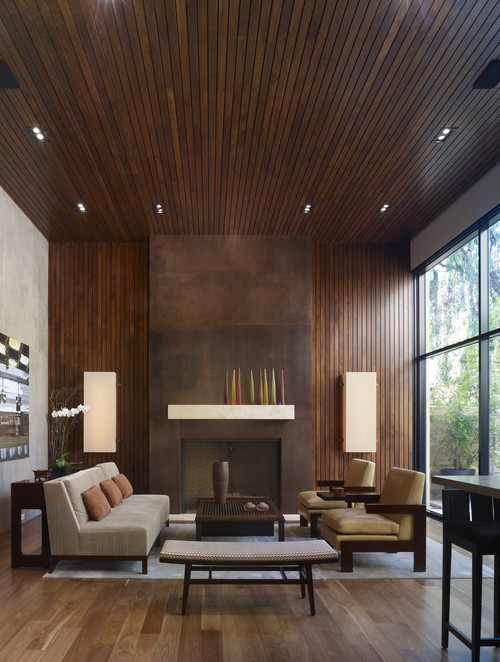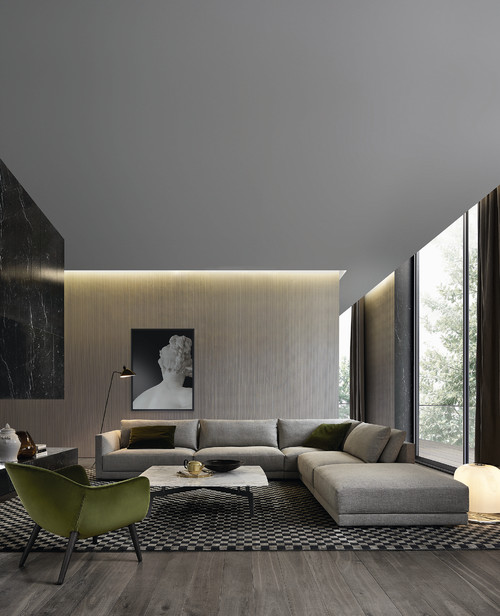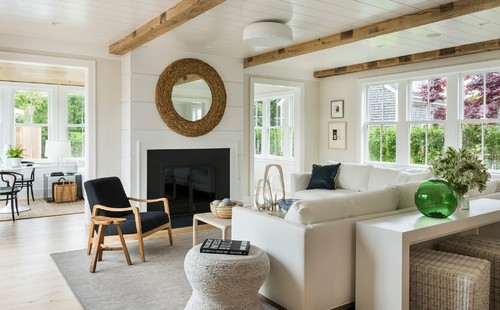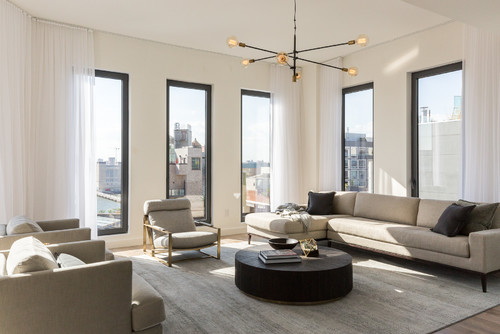Modern and Contemporary Design Styles:
A Comprehensive Guide
When it comes to interior design, the terms “modern” and “contemporary” often cause confusion. Although they may seem similar, these two styles have distinct characteristics and aesthetics. Let’s explore the subtle differences between the two, helping you understand their features and how to distinguish them in your home.
Modern Design: Clean, Simple, and Warm
Key Features:
Modern design focuses on simplicity and functionality. It is characterized by straight lines, minimal details, and a neutral color palette. The design incorporates natural materials like wood to add warmth to clean and organized spaces.
Color Palette:
In modern decor, the color palette is dominated by shades of white, light brown, beige, and cream. Occasionally, muted tones of gray and blue may appear, but the overall look remains monochromatic and understated.
Furniture:
Modern furniture is simple and functional, with a lack of ornate details like fringes on cushions or elaborate patterns. Instead, the design emphasizes straight lines and the use of natural materials. For instance, a modern sofa may have wide, square arms and be covered in neutral fabric, creating a clean yet comfortable appearance.
Lighting:
Lighting in modern design is simple and organized. A distinctive feature of modern lamps is the cylindrical shade, where the top and bottom of the shade are the same size, creating a straightforward, geometric look. Unlike more decorative styles, modern lighting avoids curves and complex designs, sticking to clean, straight lines.
Art and Accessories:
In modern spaces, art is usually impressionistic, with muted colors and fewer hues. Accessories are kept minimal, often limited to a few large books on a coffee table, a simple vase, or a natural piece like a fig tree. The idea is to maintain a clean and clutter-free environment.
Fabrics and Window Treatments:
Fabrics in modern decor are usually natural, like linen or mohair. Patterns are rare, and if present, they are subtle. Window treatments are simple, often matching the wall color, with clean panels that hang straight without gathering at the floor.
Contemporary Design: Bold, Sculptural, and Simple
Key Features:
Contemporary design is more flexible and evolves with trends. It often includes bold, sculptural elements and a mix of materials like glass, chrome, and painted surfaces.
Color Palette:
While contemporary decor also uses neutral backgrounds like white walls, it often features strong pops of color. The contrast between sleek furniture and bright accessories creates a modern and exciting feel.
Furniture:
Contemporary furniture is all about making a statement. You might find a chair with an unconventional shape or a cabinet with a glossy finish. The design often includes unique details that set it apart from more traditional styles.
Lighting:
Lighting in contemporary homes is often artistic, making it a focal point in the space. Whether it’s a metal chandelier with clean lines or a glass fixture with geometric shapes, contemporary lighting focuses as much on form as it does on function.
Art and Accessories:
Art in contemporary spaces is bold and often abstract. Accessories are limited but impactful, such as a single sculptural piece or a striking rug with a bold pattern. The idea is to create visual interest without overwhelming the space.
Fabrics and Window Treatments:
In contemporary design, window treatments are usually sleek and simple, often with cornice boxes that add a clean architectural element. Fabrics may be rich in texture but are usually in solid colors to keep the focus on the room’s design.
Modern vs Contemporary Design: Key Differences
-Structure vs. Flexibility:
Modern design is more structured and follows a set of defined principles, while contemporary design is more flexible and adapts to current trends.
-Warmth vs Drama:
Modern spaces are warm and inviting, often using wood tones to soften clean lines. Contemporary spaces may feel cooler due to the use of hard, shiny surfaces, but they compensate with bold, dramatic elements.
-The Simple Approach:
Both styles favor simplicity, but while modern design achieves this through simplicity and functionality, contemporary design does so with bold statements and striking contrasts.
Understanding these differences can help you choose the right style for your home or recognize them when you see them in design magazines or homes. Whether you prefer the warmth of modern design or the boldness of contemporary spaces, each style offers unique ways to express your personal taste.










